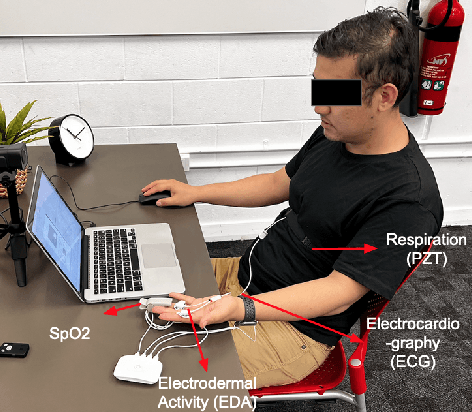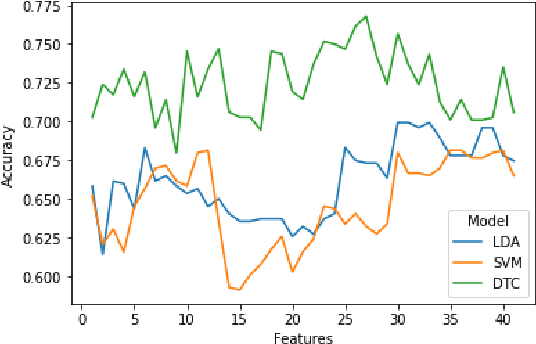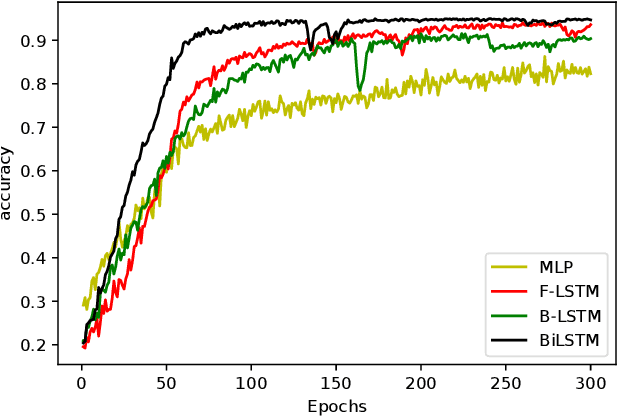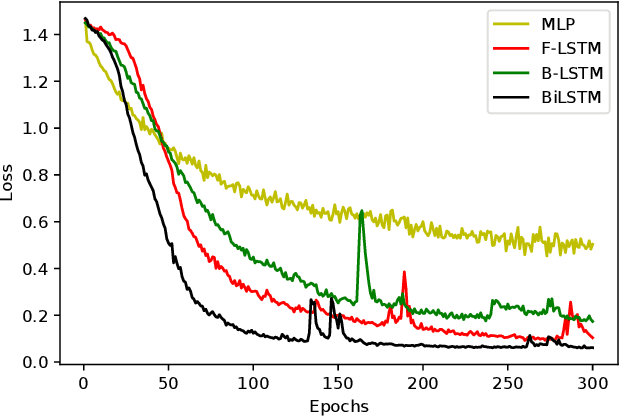Julio Romero
Measuring Cognitive Workload Using Multimodal Sensors
May 05, 2022



Abstract:This study aims to identify a set of indicators to estimate cognitive workload using a multimodal sensing approach and machine learning. A set of three cognitive tests were conducted to induce cognitive workload in twelve participants at two levels of task difficulty (Easy and Hard). Four sensors were used to measure the participants' physiological change, including, Electrocardiogram (ECG), electrodermal activity (EDA), respiration (RESP), and blood oxygen saturation (SpO2). To understand the perceived cognitive workload, NASA-TLX was used after each test and analysed using Chi-Square test. Three well-know classifiers (LDA, SVM, and DT) were trained and tested independently using the physiological data. The statistical analysis showed that participants' perceived cognitive workload was significantly different (p<0.001) between the tests, which demonstrated the validity of the experimental conditions to induce different cognitive levels. Classification results showed that a fusion of ECG and EDA presented good discriminating power (acc=0.74) for cognitive workload detection. This study provides preliminary results in the identification of a possible set of indicators of cognitive workload. Future work needs to be carried out to validate the indicators using more realistic scenarios and with a larger population.
Pain Assessment based on fNIRS using Bidirectional LSTMs
Dec 27, 2020


Abstract:Assessing pain in patients unable to speak (also called non-verbal patients) is extremely complicated and often is done by clinical judgement. However, this method is not reliable since patients vital signs can fluctuate significantly due to other underlying medical conditions. No objective diagnosis test exists to date that can assist medical practitioners in the diagnosis of pain. In this study we propose the use of functional near-infrared spectroscopy (fNIRS) and deep learning for the assessment of human pain. The aim of this study is to explore the use deep learning to automatically learn features from fNIRS raw data to reduce the level of subjectivity and domain knowledge required in the design of hand-crafted features. Four deep learning models were evaluated, multilayer perceptron (MLP), forward and backward long short-term memory net-works (LSTM), and bidirectional LSTM. The results showed that the Bi-LSTM model achieved the highest accuracy (90.6%)and faster than the other three models. These results advance knowledge in pain assessment using neuroimaging as a method of diagnosis and represent a step closer to developing a physiologically based diagnosis of human pain that will benefit vulnerable populations who cannot self-report pain.
 Add to Chrome
Add to Chrome Add to Firefox
Add to Firefox Add to Edge
Add to Edge